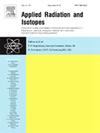Assess human blood uranium levels of some Iraqi companies
Abstract
The goal of this study is to measure the uranium concentration levels in the blood of Iraqi workers employed in certain government companies. Assessing the initial level of uranium toxicity in their blood and the possibility of health problems occurring. 184 blood samples from Iraqi government companies and the control group were collected in this study. A solid-state nuclear track detector (CR-39) was used to measure the amount of uranium present. Two drops of blood (100 μl) were placed on CR-39. The CR-39 was irradiated with a thermal neutron using the fission-track technique (241Am-9Be) to determine the uranium concentration in blood samples. The statistical analysis is carried out using the Origin Lab 2024 version. The results show the average of uranium concentration at all locations has a higher level compared to the control group. The blood samples from workers at the phosphate company had the highest amount (1.021 ± 0.050 μg/l), compared to samples from other factories. This result confirms that there is a connection between the concentration of uranium and phosphate substances. The results suggest that there is a slight increase in uranium levels that is related to both age and years of employment.

 求助内容:
求助内容: 应助结果提醒方式:
应助结果提醒方式:


